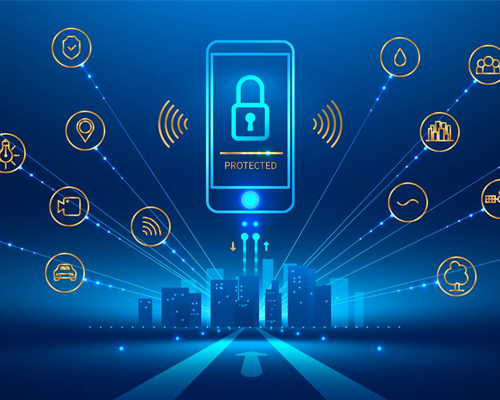Blog Detail
Cybercrimes in Lesotho: An In-depth Analysis of the Contemporary Landscape
14-Nov-2024
The Writing Lens
The rapid digitization of global economies has brought with it unprecedented convenience, but also a surge in cybercrimes. In Lesotho, the adoption of technologies like cloud computing, e-commerce, and IoT has accelerated economic growth and innovation. However, it has also expanded the attack surface for cybercriminals. This blog explores the contemporary landscape of cybercrimes in Lesotho, the challenges faced, and the strategies to address them.

Understanding the Cybercrime Landscape
Cybercrime in Lesotho mirrors global trends, with activities ranging from identity theft to ransomware attacks. Recent data reveals a steady increase in incidents such as phishing, malware infections, and online fraud. Cybercriminals exploit vulnerabilities in digital infrastructure, targeting individuals, businesses, and government entities alike.- Phishing Attacks: A common method where attackers deceive victims into divulging sensitive information like passwords or financial details.
- Ransomware: Malicious software that encrypts critical data, demanding a ransom for its release.
- Social Engineering: Tactics designed to manipulate individuals into revealing confidential information.
Challenges in Combating Cybercrime
Lesotho faces several hurdles in creating a resilient cybersecurity framework:- Resource Constraints: Limited funding and infrastructure impede the development of robust defense mechanisms.
- Skills Gap: A shortage of trained cybersecurity professionals hinders effective incident response and mitigation.
- Inadequate Legislation: Although laws like the Computer Crime and Cyber Security Act exist, they require refinement to address evolving cyber threats.
- Low Awareness Levels: Individuals and businesses often lack sufficient knowledge about basic cybersecurity practices, making them vulnerable to attacks.
Government and Industry Efforts
To address these challenges, the government of Lesotho has initiated several measures:- Legislative Framework: Enactments like the Electronic Transactions Act and the Data Protection Act aim to safeguard user data and penalize cybercriminals.
- Capacity Building: Workshops and training programs for law enforcement and IT professionals aim to enhance their ability to counter cyber threats.
- Public Awareness Campaigns: Educating citizens about safe online practices is a priority to reduce the risk of cybercrimes.
The Role of Emerging Technologies
Emerging technologies hold the potential to transform Lesotho’s cybersecurity landscape:- AI and Machine Learning: These tools can analyze vast amounts of data to detect anomalies and predict potential threats.
- Blockchain: By ensuring data integrity and transparency, blockchain offers a decentralized approach to securing digital transactions.
- IoT Security Measures: Implementing advanced encryption and network segmentation can protect connected devices from intrusion.
Building a Cyber-Resilient Future
Collaboration among stakeholders is critical for combating cybercrime. Governments, businesses, and individuals must work together to:- Strengthen legal frameworks to address new forms of cybercrime.
- Invest in capacity building to bridge the skills gap.
- Enhance public-private partnerships to share knowledge and resources.
- Promote continuous education to foster a culture of cybersecurity awareness.
Conclusion
Cybercrime remains a significant threat to Lesotho’s digital transformation. While challenges persist, strategic investments in technology, education, and collaboration can pave the way for a secure digital environment. By prioritizing cybersecurity, Lesotho can protect its citizens and infrastructure while unlocking the full potential of the digital age.© The Writing Lens. All Rights Reserved. Designed by Victoria Technologies (Pty) Ltd.

Comments (0)
Leave a comment